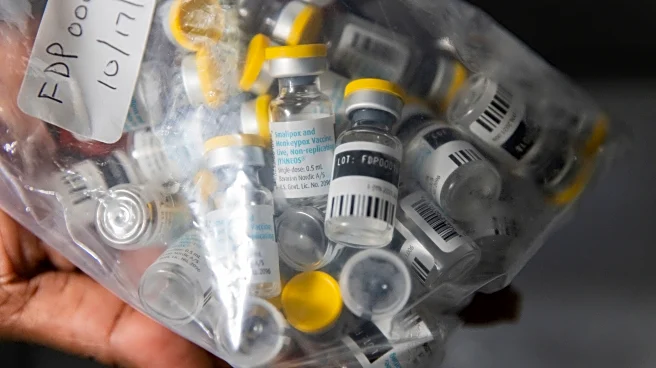What's Happening?
Representative Chellie Pingree has demanded explanations from the Environmental Protection Agency (EPA) regarding the delay in releasing a report on the health risks of a 'forever chemical' found in U.S. water supplies. The report, which was ready for publication
in April, has yet to be released, raising concerns about potential interference with the EPA's scientific work. The chemical in question, PFNA, is known to affect human development and has been found in drinking water systems serving millions of Americans. The delay coincides with the EPA's decision to rescind drinking water limits for PFNA, amid industry pushback against regulating such chemicals.
Why It's Important?
The delayed release of the EPA report has significant implications for public health and environmental policy. The report's findings are crucial for setting regulatory limits and cleanup standards for PFNA, a chemical linked to various health issues. The delay raises questions about transparency and accountability within the EPA, potentially undermining public trust in the agency's commitment to protecting health and the environment. The situation highlights the ongoing tension between regulatory agencies and industry interests, with potential consequences for communities affected by chemical contamination.
What's Next?
The EPA is expected to respond to Representative Pingree's inquiries, which could lead to further scrutiny of the agency's decision-making processes. The release of the report, once finalized, will be critical for informing regulatory actions and legal battles over environmental cleanup responsibilities. Stakeholders, including environmental groups and affected communities, will likely continue to advocate for stricter regulations and transparency in the EPA's handling of chemical safety assessments.
Beyond the Headlines
The controversy surrounding the delayed report reflects broader challenges in balancing economic interests with environmental and public health protections. The situation underscores the need for robust scientific integrity and independence within regulatory agencies to ensure that policy decisions are based on sound evidence rather than external pressures. The outcome of this issue could influence future regulatory approaches to chemical safety and environmental justice.














